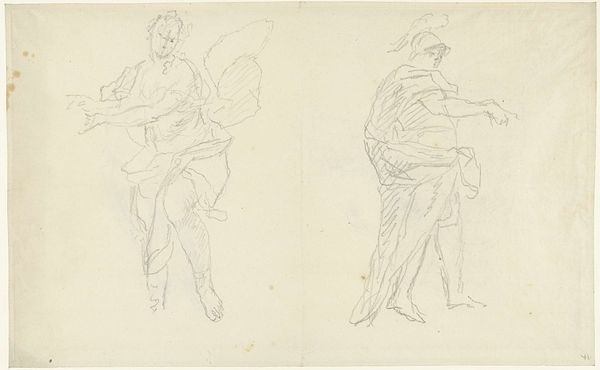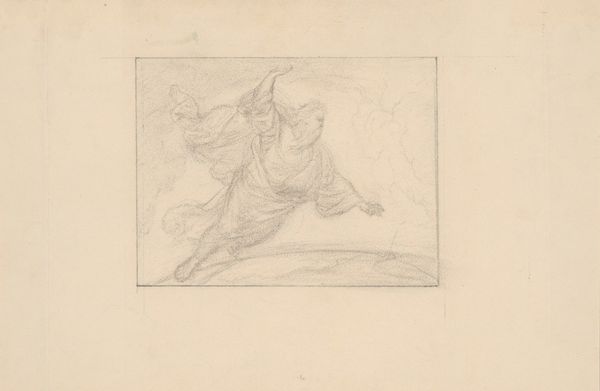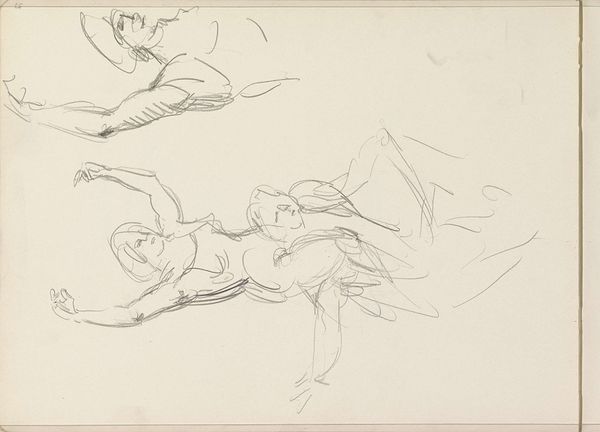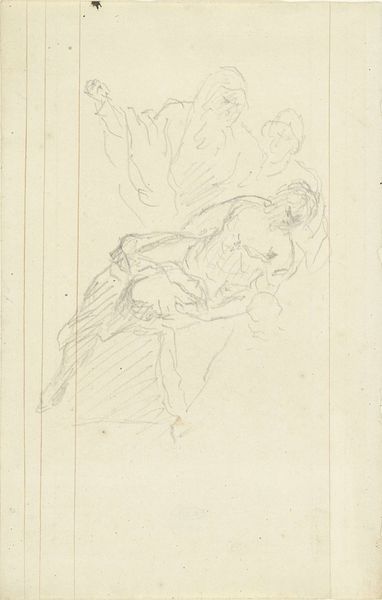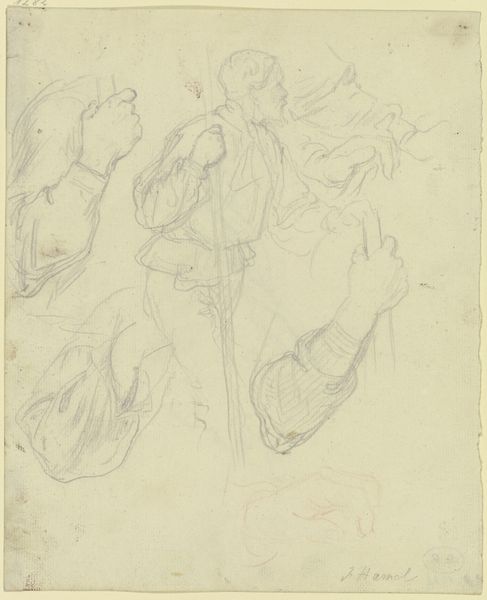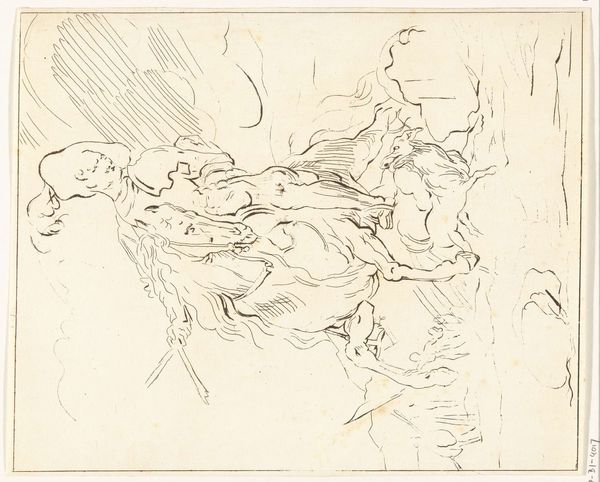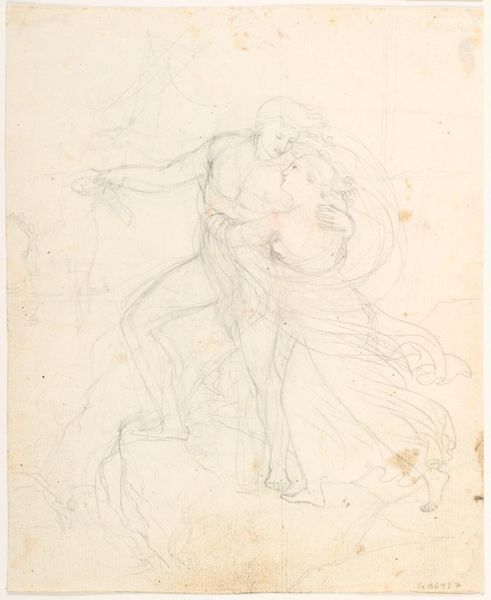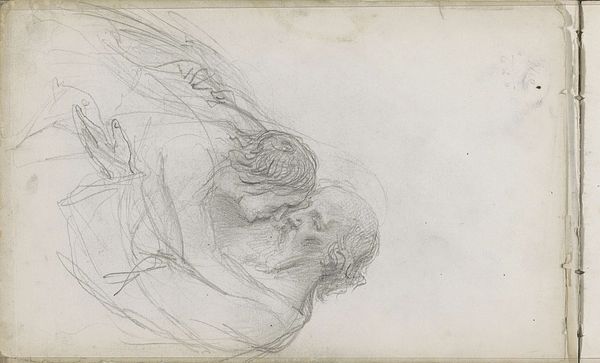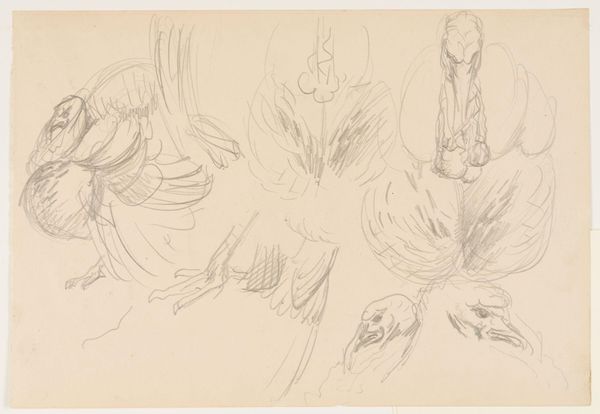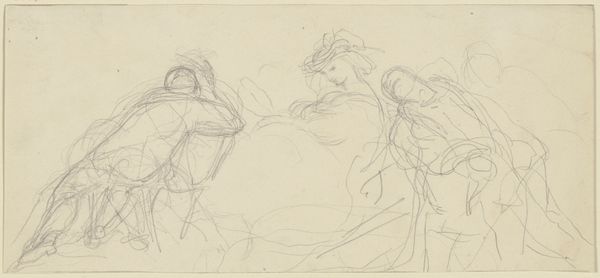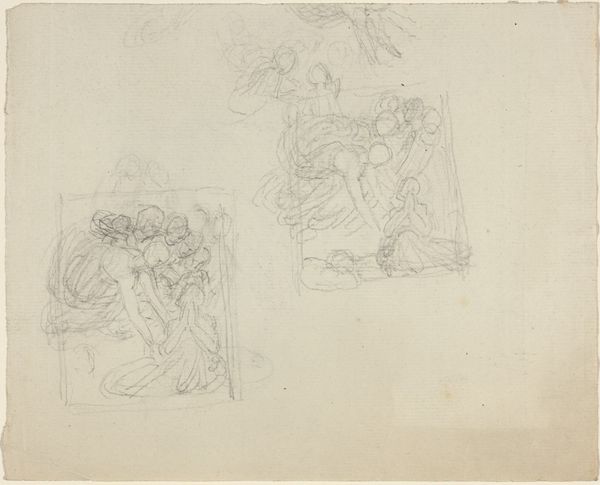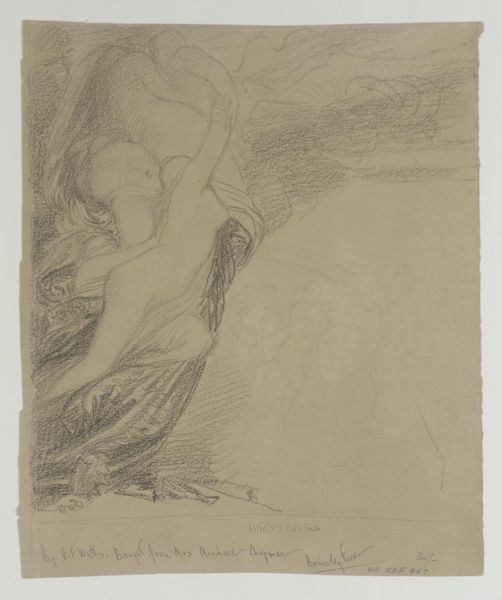
drawing, pencil
#
drawing
#
pencil sketch
#
landscape
#
figuration
#
pencil
Dimensions: height 230 mm, width 370 mm
Copyright: Rijks Museum: Open Domain
Curator: This sheet features two sketches by Dionys van Nijmegen, dating back to the late 18th century. The medium here is quite simple: pencil on paper. The sheet presents a striking contrast between studies—a female figure on the right and a rather imposing river god on the left. What's your initial take on these paired images? Editor: There's an immediate sense of the academic in these figures, an artist working through classical ideals. They also feel somewhat provisional, like notes towards a larger composition, and very... fragile? As if they might dissipate if touched too roughly. Curator: That's a keen observation, and precisely where the interest lies. These figures are steeped in iconographic meaning. Note the river god’s strong physique—representing the life-giving and destructive forces of nature—and the way it contrasts with the rather idealized image of a woman in contrapposto stance beside. They recall centuries of such pairings in western art and its patriarchal associations, but here in preparatory form, those themes can almost breathe. Editor: Yes, one does feel the residue of social hierarchies. What I find intriguing, though, is that even in these sketches, seemingly quickly rendered, the power dynamic is clearly at play. The goddess, slightly slighter in build, assumes this carefully posed balance—while the River God figure, by contrast, dominates his side of the page. The shading makes his figure appear much more prominent and three-dimensional, as well. Curator: Precisely. This embodies how cultural assumptions permeate all aspects of representation, even preliminary sketches. The flowing lines on the goddess remind one of countless statues in Roman or Greek style, linking her immediately to well-trodden pathways of iconography. I wonder how many other interpretations our visitors will form when encountering such forms? Editor: I'm interested in seeing how visitors react to this interplay between the raw energy in the drawing and these coded figures. These types of figure studies have been incredibly powerful cultural tools that dictate perceptions in sometimes invisible ways. Curator: Ultimately, I hope the juxtaposition of these forms encourages our audience to look critically at both classical representations and their underlying social implications, past and present. Editor: Agreed. There's an immediacy about the sketches too, which brings an unusual opportunity to get up close and question the methods of cultural production. Thank you.
Comments
No comments
Be the first to comment and join the conversation on the ultimate creative platform.
